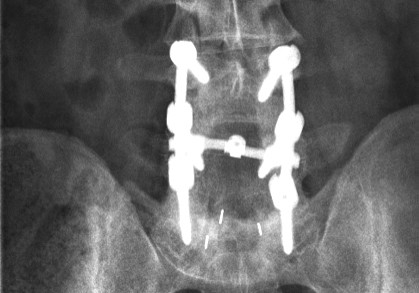An estimated 800,000 Americans undergo invasive, open and instrumented back operations each year. Many of those patients report increased and ongoing pain following their surgeries. The instances of this happening are so great, the condition has a name: Failed Back Surgery Syndrome (FBSS). The number one reason back surgeries fail, and some patients experience continued pain, is because the operation failed to correct the true cause of their pain. Other factors include:
• A surgery performed at the wrong vertebrae level of the spine
• A recurrent disc herniation after surgery
• Fragments of spinal disc or bone material left in the back that press on nerves
• Screws and other hardware that break or become loose
• Excessive scar tissue pressing on nerves
• Fused bone that continues to grow and impinges on a nerve
• Facet joint (which allow for the movement) growth that restricts the spinal canal or presses on nerves
There have been several studies on the effectiveness of open-back surgeries published in the journal Spine. In one study, researchers reviewed records from 1,450 patients in the Ohio Bureau of Workers’ Compensation database who had diagnoses of disc degeneration, disc herniation or radiculopathy, a nerve condition that causes tingling and weakness of the limbs. Half of the patients had surgery to fuse two or more vertebrae in hopes of curing low back pain. The other half had no surgery, even though they had comparable diagnoses. After two years, just 26% of those who had fusion surgery returned to work, compared to 67% of patients who didn’t undergo surgery. The study provides clear evidence that for many patients, fusion surgeries designed to alleviate pain from degenerating discs don’t work, says the study’s lead author Dr. Trang Nguyen, a researcher at the University of Cincinnati College of Medicine. Also, a study of Washington State worker compensation recipients reported that 68% of those studied were still disabled two years after fusion surgery, and 67.7% reported increased pain after spinal fusion surgery.
There are methods to correct multi-level fusions, fused bones that continue to grow, and artificial disc failures. Dr. Bonati, founder of the Bonati Spine Institute‘s patented multiple instruments and techniques for removal of failed spinal surgery hardware without additional open-back surgery. An incision the size of a dime allows trained surgeons to remove hardware, and decompress the area where the true cause of pain originates. The Institute’s success with correcting failed open and instrumented fusion surgeries is part of its overall 98.75% patient reported satisfaction rating.

